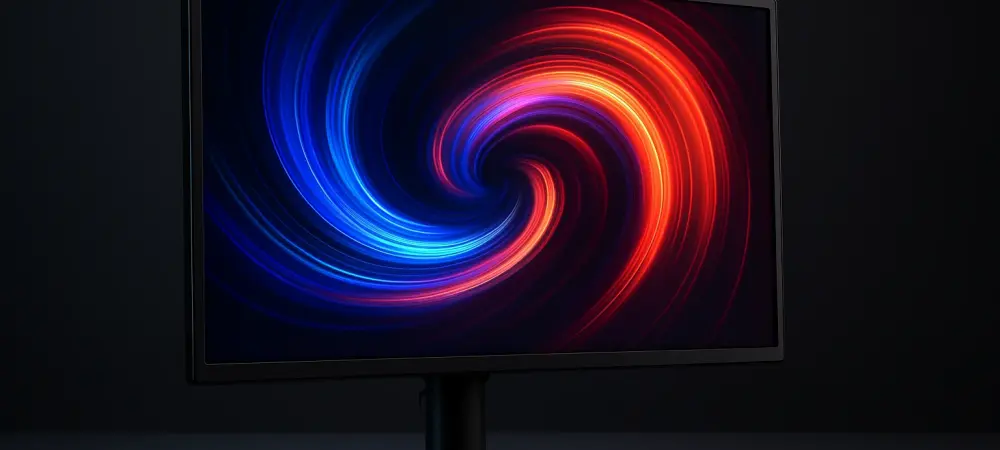In a world where gaming technology evolves at breakneck speed, the pursuit of the ultimate competitive edge has driven manufacturers to explore uncharted territories of performance, and AOC is no exception. Imagine a display so fast that every flicker of movement becomes a seamless blur, offering gamers an unprecedented level of responsiveness. AOC, a prominent name in the monitor industry known for balancing affordability with high-end features, is poised to redefine gaming standards with its upcoming AGON series for 2026. This ambitious lineup, featuring a staggering 1000Hz refresh rate monitor, signals a bold leap into the future of eSports and competitive play. With leaks revealing a diverse array of models tailored to various gaming needs, the announcement has sparked both excitement and skepticism among enthusiasts about the practicality of such extreme specifications.
Breaking New Ground in Gaming Displays
Pushing Refresh Rates to the Limit
AOC’s 2026 AGON series is set to introduce a flagship 27-inch dual-mode monitor that achieves a groundbreaking 1000Hz refresh rate at 1080p resolution, while also offering a 500Hz mode at 1440p. This places the company at the forefront of a technological race, competing directly with other industry players aiming for similar milestones by next year. The sheer speed of this display promises unparalleled fluidity, potentially giving professional gamers a critical advantage in fast-paced titles. However, the challenge lies in whether current hardware can produce frame rates high enough to match this capability. Most modern systems struggle to exceed even half of this refresh rate in demanding games, raising questions about the immediate relevance of such a feature for the average user. Despite these concerns, the innovation underscores a commitment to pushing boundaries, even if the full potential remains theoretical for now.
Diverse Models for Varied Needs
Beyond the headline-grabbing 1000Hz monitor, AOC’s lineup includes several other impressive displays catering to a wide spectrum of gamers. A 27-inch 5K monitor with a 165Hz refresh rate, switchable to 330Hz at QHD, targets those prioritizing visual fidelity alongside performance. Another 27-inch UHD model offers 160Hz with integrated AI features that adapt visual settings based on game genre, showcasing a blend of innovation and practicality. Additionally, two 27-inch QHD monitors with 420Hz and 360Hz refresh rates, the latter incorporating PULSAR technology for enhanced motion clarity, address competitive needs without reaching into the extreme. A 24.1-inch TN panel at 400Hz rounds out the offerings. These varied options demonstrate AOC’s intent to appeal to both mainstream and niche audiences, ensuring that high-performance displays are accessible across different preferences and budgets, while maintaining a focus on user-centric design improvements.
Industry Trends and Practical Implications
The Race for Higher Refresh Rates
The push toward ever-higher refresh rates, as exemplified by AOC’s 2026 roadmap, reflects a broader industry trend where manufacturers vie to outdo each other with eye-catching specifications. Competitors are similarly exploring extreme refresh rates, often positioning these advancements as key differentiators in a crowded market. While technologies like backlight strobing—hinted at through features such as PULSAR—help simulate or achieve these speeds, skepticism persists about their tangible benefits. Many experts argue that refresh rates beyond 240Hz or 360Hz yield diminishing returns, as human perception struggles to discern improvements at such levels. This race, while technologically impressive, often prioritizes marketing appeal over practical utility, leaving gamers to question whether the investment in cutting-edge displays will truly enhance their experience in the near term.
Balancing Innovation with Usability
AOC’s focus on dual-mode functionality across its AGON series highlights an effort to balance innovation with usability, allowing gamers to toggle between high resolution for immersive experiences and high refresh rates for competitive play. This versatility addresses diverse gaming scenarios, from story-driven titles to eSports tournaments, ensuring that users aren’t locked into a single performance profile. However, the introduction of a 1000Hz monitor sparked debates about its relevance given current technological constraints. Achieving 1000 FPS in games remains a distant goal for most hardware setups, rendering such extreme refresh rates largely aspirational. Despite this, the broader lineup, with models offering more attainable refresh rates like 360Hz and 420Hz, provides practical solutions for gamers seeking high performance without venturing into speculative territory. This strategic diversity is a testament to AOC’s understanding of market dynamics and user needs.
Reflecting on Future Possibilities
Looking back, AOC’s announcement of the 2026 AGON series stood as a pivotal moment in gaming monitor evolution, blending audacious innovation with grounded options. The 1000Hz model, while a technological marvel, prompted critical discussions about the limits of perceivable performance gains. Meanwhile, the rest of the lineup offered immediate value to a wide audience through thoughtful features and specifications. Moving forward, the industry should focus on bridging the gap between hardware capabilities and display potential, ensuring that such advancements become accessible to more users. Exploring ways to optimize game engines and GPU performance to match these cutting-edge monitors could unlock their full promise. Additionally, manufacturers might consider educating consumers on the practical benefits of high refresh rates, helping gamers make informed choices about their investments in next-generation technology.

